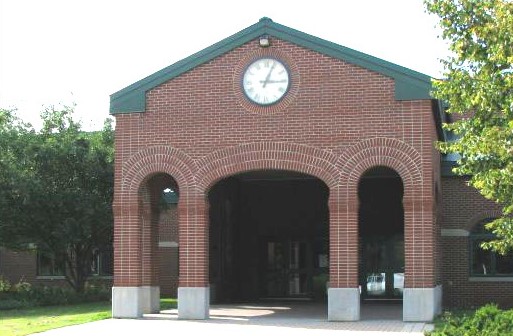VASSALBORO: New town park officially named Eagle Park
 by Mary Grow
by Mary Grow
It’s official: Vassalboro’s new town park on Outlet Stream and Route 32, a bit north of East Vassalboro village, is named Eagle Park.
Select board members made the decision unanimously at their Feb. 8 meeting, at the request of conservation commission chairman Holly Weidner. Weidner told them a Boy Scout intends to make a sign for the park as his Eagle Scout project.
The name is appropriate, Weidner said, because now that alewives can migrate the length of the stream, from the Sebasticook River to China Lake, the park attracts bald eagles (and great blue herons) that prey on the fish.
The Feb. 8 meeting included recognition of the week that includes Feb. 8 as scouting’s anniversary week. With troop leaders and members present, select board member Frederick “Rick” Denico, Jr., read a proclamation listing the Vassalboro Scouts’ many volunteer projects and activities.
Select board members spent much of the rest of their meeting talking about the Vassalboro Sanitary District’s (VSD) financial problems and about allocating remaining federal ARPA (American Rescue Plan Act) funds.
The VSD is deeply in debt for the recent connection to the Waterville-Winslow sewage disposal system. Because of debt repayments, the fees charged to its 200 or so customers in East and North Vassalboro have risen steeply and will continue to rise.
Town Manager Aaron Miller said VSD officials have asked the town for $200,000 from the TIF (Tax Increment Financing) fund. Miller said he asked the VSD’s attorney and the town’s attorney to consider the situation together.
Meanwhile, Denico reported, he had connected VSD officials with U. S. Senator Susan Collins’ office, as Vassalboro’s state senator, Matthew Pouliot, recommended. Select board chairman Chris French added that state representative Richard Bradstreet had discussed VSD customers’ concerns with Maine Governor Janet Mills.
Vassalboro’s TIF money comes from taxes paid on the gas pipeline that runs through the town.
Miller said Vassalboro has about $84,000 in unappropriated ARPA funds. Board members discussed three potential uses and approved two, work on the fuel tanks at the public works garage (which are used by Vassalboro’s school, fire and police departments as well as public works) and buying generators for the town office, the food pantry and the Riverside fire station.
A third request was from Police Chief Mark Brown, for a rifle and related items, radar and additional equipment for the police vehicle. A discussion among board and audience members started with whether Brown’s duties justify the additional weaponry – board members said yes, all law enforcement officers face danger – and veered into speeding control.
The claim that Vassalboro select board members told Brown not to enforce speed limits was partially denied. Because he works only 15 hours a week – and, French reminded everyone, voters at the 2023 town meeting rejected a proposal to increase his hours to 20 a week – board members want to minimize time he spends in court defending speeding tickets.
Audience members divided over whether law enforcement is the best way to deter speeders. Weidner, referring to the recent meeting on East Vassalboro traffic, advocated for measures that make the roadway appear narrower – a narrow road is most likely to make drivers slow down, she said.
Board members unanimously approved funds for the rifle and radar, only; they await more information on vehicle modifications.
Douglas Phillips presented the Historical Society’s request for continued ARPA funding for lighting and other work at the former East Vassalboro schoolhouse, owned by the town and leased by the historical society as its headquarters and museum. Select board members unanimously approved.
Miller proposed adding a municipal buildings account in future budgets.
The historical society owns five East Vassalboro buildings, Phillips said: the Weymouth barn on the east side of Main Street south of the Grange Hall, and on the west side of the street the former Taylor house and barn, the adjacent blacksmith shop, the former East Village Fire House just north and the harness shop behind the fire house. Society officials are applying for grants to maintain these buildings.
In other business, board members asked Miller to draft an article for the town meeting warrant asking voters to delete the quorum requirement for a special town meeting. Since 1991, 125 registered voters must sign in before a special meeting can begin, a requirement select board members consider an obstacle to trying to hold a special meeting.
The next regular Vassalboro select board meeting is scheduled for 6:30 p.m., Thursday, Feb. 22. It will start with a public hearing on proposed amendments to the town’s solid waste ordinance (now renamed the Solid Waste and Recycling Ordinance).






